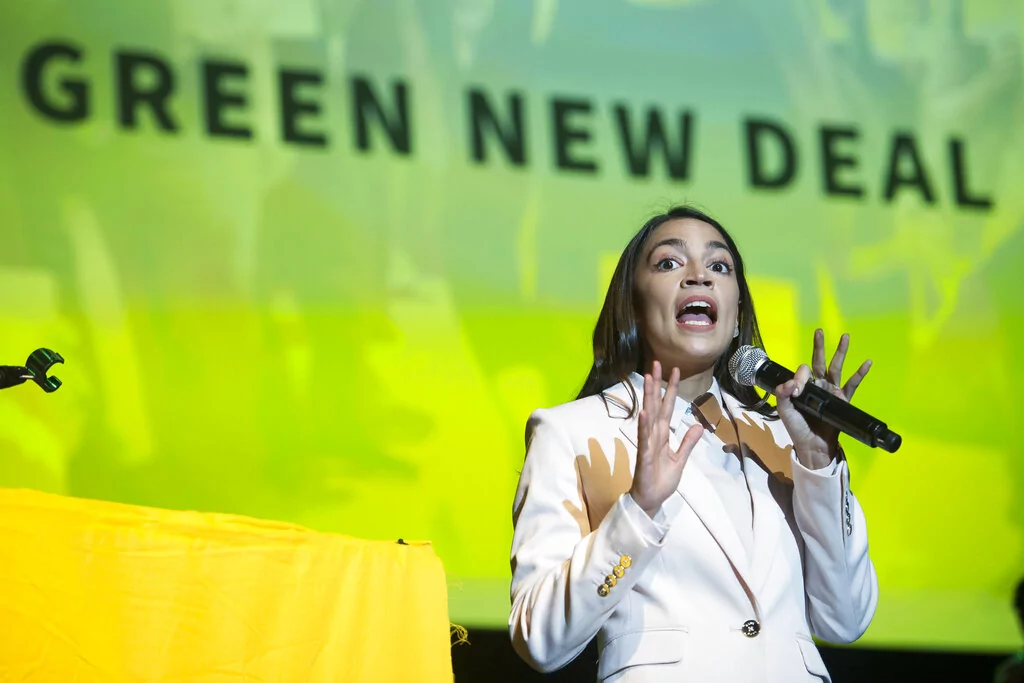
As part of its continued war on the “Green New Deal,” the Trump administration ordered states to end a multi-billion dollar program to build electric vehicle chargers along interstate highways.
On Thursday, the Federal Highway Administration released a memo directing states to halt the National Electric Vehicle Infrastructure program, a $5 billion provision under the Bipartisan Infrastructure Law signed by former President Joe Biden in 2021. The law also included another $2.5 billion for EV chargers in communities and neighborhoods.
The memo seeks to implement an executive order declared by President Donald Trump on Inauguration Day targeting the Green New Deal, or progressive environmental policies that found their way into legislation signed by Biden in 2021. The Green New Deal intertwined with EV policies due to its goals of “overhauling transportation systems” to reduce emissions, including expanding EV manufacturing and building EV “charging stations everywhere.”
FULL LIST OF EXECUTIVE ORDERS, ACTIONS, AND PROCLAMATIONS TRUMP HAS MADE AS PRESIDENT
The Bipartisan Infrastructure Law’s goal surrounding federally subsidizing EV chargers targeted building 500,000 chargers in the country by 2030. By December of 2023, a single charging station had yet to be installed, while the analytics firm Paren reported 55 charging stations had been built as of February 2025.

Ryan Gallentine, managing director at the national business association Advanced Energy United, vowed to defy the executive order in comments to the Washington Post.
States “are under no obligation to stop these projects based solely on this announcement,” she said. “We call on state DOTs and program administrators to continue executing this program until new guidance is finalized.”
On the day he took office, Trump signed an executive order terminating the Green New Deal. The president also put his signature to an executive action eliminating EV “mandates.”
“Today, we will end the Green New Deal, and we will revoke the electric vehicle mandate, saving our auto industry and keeping my sacred pledge to our great American autoworkers,” he said, ripping the Inflation Reduction Act on Jan. 20. “In other words, you’ll be able to buy the car of your choice.”
The EV order terminated “where appropriate, state emissions waivers that function to limit sales of gasoline-powered automobiles; and by considering the elimination of unfair subsidies and other ill-conceived government-imposed market distortions that favor EVs over other technologies and effectively mandate their purchase by individuals, private businesses, and government entities alike by rendering other types of vehicles unaffordable.”
Under the terms of Trump’s executive order on the Green New Deal, federal agencies were directed to “immediately pause the disbursement of funds appropriated” through the Inflation Reduction Act and the Infrastructure Investment and Jobs Act, “including but not limited to funds for electric vehicle charging stations made available through the National Electric Vehicle Infrastructure Formula Program and the Charging and Fueling Infrastructure Discretionary Grant Program.”
The Green New Deal refers to a resolution introduced by Rep. Alexandria Ocasio-Cortez (D-NY) and Sen. Edward Markey (D-MA) in 2019.

Citing the “existential threat” of climate change, also described as “the most pressing problem facing our generation,” the resolution outlined a host of ambitious goals, including achieving net zero carbon emissions by 2050, overhauling U.S. transportation systems, launching a “10-year national mobilization” to meet 100% of power demand through clean, renewable, and zero-emission energy sources, and upgrading all existing U.S. buildings and build new buildings, to achieve maximum energy efficiency.
“We need bold action to avoid the worst impacts of climate change, and we may have as few as 12 years to achieve it,” the Democratic lawmakers warned.
CLICK HERE TO READ MORE FROM THE WASHINGTON EXAMINER
During a March 2019 vote, Senate Republicans blocked the resolution, and most Democrats declined to advance the measure, instead voting present. Three centrist Democrats at the time, Sens. Joe Manchin (D-WV), Doug Jones (D-AL), and Kyrsten Sinema (D-AZ) joined Republicans in voting against the Green New Deal.
However, a few years later, Biden signed key tenets of the Green New Deal into law through his administration’s signature Inflation Reduction Act and the Infrastructure Investment and Jobs Act, which awarded billions to climate change agenda items.






